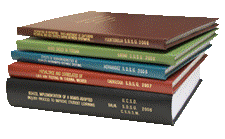Libraries, University of Nebraska-Lincoln

Archival Master’s Theses from the University of Nebraska-Lincoln
Date of this Version
7-1973
Document Type
Article
Citation
Thesis (M.S.)—University of Nebraska—Lincoln, 1973. Department of Animal Science.
Abstract
By using flaked, formed, and sectioned processing techniques, a low-cost product can be produced from pork that is consistently uniform, can be easily cooked, has a texture after cooking that resembles cooked, intact muscle, and looks and tastes very much like the more popular cuts of pork. Producing a product by using the flaked, formed, and sectioned techniques is a relatively new concept, and appears to have definite advantages over other conventional techniques commonly used.
The purpose of this study was to evaluate how the chemical, physical, and organoleptic properties of fabricated pork are influenced by using various flake head sizes, meat of different temperatures, and various blend combinations.
Twenty-two different blends were formulated from boneless pork trim (ham, loin, belly, and shoulder) by using meat of two temperatures (-5.6°C and 2.2°C) flaked with four different-sized flaking machine heads (3.0 mm, 6.9 mm, 12.7 mm, and 41.0 mm). Meat of each temperature and flake size was used alone (except for the 41.0 mm head) and in combination to form blends in ratios of 100:0, 75:25, 50:50, 25:75, and 0:100. After processing, each blend was formed and sectioned. Chemical, physical, and organoleptic properties of the fabricated pork were then analyzed. Single degree of freedom comparisons were made for temperature and blend within temperature.
Advisor: Roger W. Mandigo


Comments
Copyright 1973, the author. Used by permission.